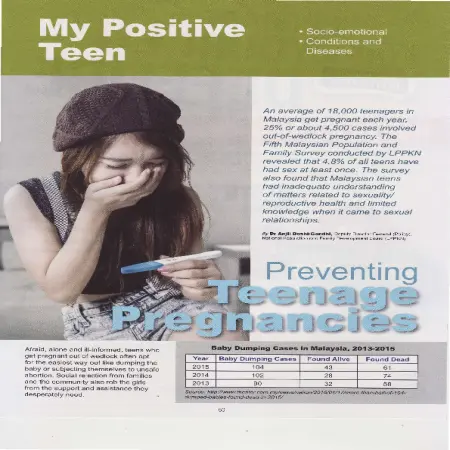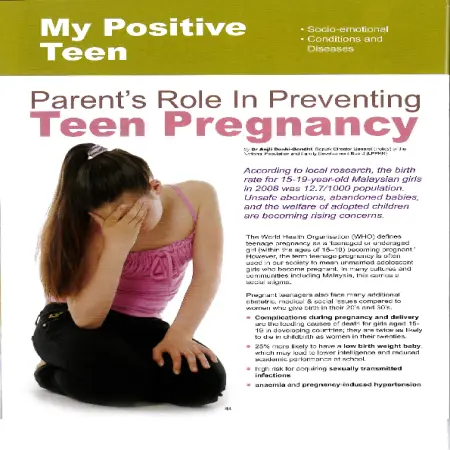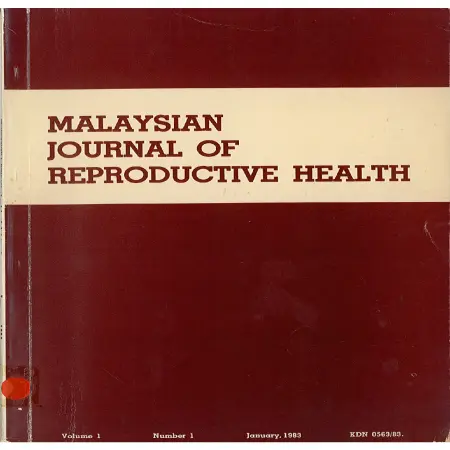Browse by Type
Results for Item type : "Article"
|
|
Panduan pemakanan bayi
Item Type: Article
Editor:
Year: 00/03/2016
Abstract: The nutrition of children is based on the same principles as nutrition for adults. Everyone no matter little or adult needs the same nutrients such as vitamins, minerals, fats, carbohydrates and proteins. However, infants and children need different amounts according to age. Infant nutrition is important to ensure that complete nutrients are given to infants for optimal mental and physical development.
|
|
|
|
|
|
Preventing teenage pregnancies
Item Type: Article
Editor:
Year: 00/00/2016
Abstract: An average of 18,000 teenagers in Malaysia get pregnant each year, 25% or about 4,500 cases involved out-of-wedlock pregnancy. Th e Fifth Malaysian Population and Family Survey conducted by NPFDB revealed that 4.8% of all teens have had sex at least once. The survey also found that Malaysian teens had inadequate understanding of matters related to sexuality/ reproductive health and limited knowledge when it came to sexual relationships. Afraid, alone and ill-informed, teens who get pregnant out of wedlock often opt for the easiest way out like dumping the baby or subjecting themselves to unsafe abortion. Social rejection from families and the community also rob the girls from the support and assistance they desperately need.
|
|
|
|
|
|
Parent's role in preventing teen pregnancy
Item Type: Article
Editor:
Year: 00/00/2015
Abstract: The World Health Organisation (WHO) defines teenage pregnancy as a ‘teenaged or underaged girl (within the ages of 15–19) becoming pregnant.’ However, the term teenage pregnancy is often used in our society to mean unmarried adolescent girls who become pregnant. In many cultures and communities including Malaysia, this carries a social stigma.
Pregnant teenagers also face many additional obstetric, medical & social issues compared to women who give birth in their 20’s and 30’s.
|
|
|
|
|
|
Paramedic insertion of intrauterine device in a Malaysian family planning clinic
Item Type: Article
Editor:
Year: 00/06/1987
Abstract: A retrospective study was carried out in a Malaysian urban family planning clinic to evaluate the effectiveness of the paramedic in intrauterine contraceptive device (IUD)insertion. Seventy-nine multiload Cu 250 insertions by trained senior nurse in 1983 were measured against 369 insertions by doctors. Follow-up was done by nurses. At the cut-off date on 31st October 1985, the case records were examined. It was found that there was no statistically significant difference in termination percentage due to IUD complications. The nurse's group had a significantly higher percentage of failure to follow-up and also removal for personal reasons. No significant difference between the 2 groups was shown for termination due to accidental pregnancy, bleeding and pain, expulsion and pelvic infections. Removal of IUD to plan for pregnancy is high in both groups. The results show that the trained paramedic can be just as effective as doctors for IUD insertion.
|
|
|
|
|
|
Problems of neonatal surgery in Malaysia
Item Type: Article
Editor:
Year: 00/01/1983
Abstract: From January 1970 to May 1981, there were 594 neonates admitted to the General Hospital, Kuala Lumpur for surgery. Three hundred and seventy-one cases bad major alimentary tract alimentary tract abnormalities 97.1 percent of which caused obstruction. High gut anomalies and diaphragmmatic hernia (Group A cases) were relatively uncommon and the overall post-operative mortality for this group was high (64.6 percent). Overall mortality declined from 75.0 percent in 1970 to 10.3 percent for the first six month of 1981. Death rate among the low birth weight infants and those with multiple anomalies however, remain high. Factors related to post-operative mortality are discussed. Foremost among them is the time of referral to the surgeon. Various problems of management in this hospital are also highlighted.
|
|
|
|









